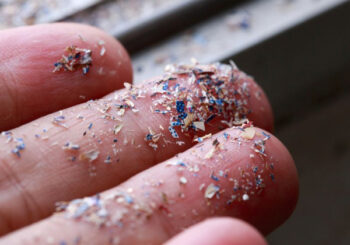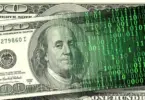Staff Writer for Wake Up World
Over the past two decades, over 7,000 studies have been conducted on the harmful effects of microplastic pollution, leading scientists to declare that it’s time for world leaders to take decisive action. The findings are staggering—microplastics are everywhere, from the depths of the oceans to the food we eat and even within our bodies. Experts say the evidence is now undeniable: We need global solutions, and we need them urgently.
The Rise of Microplastics: A Global Concern
Microplastics, microscopic plastic fragments, were first named in a 2004 study by Professor Richard Thompson and his team. Fast-forward 20 years, and the problem has only intensified. According to Thompson, “the amount of plastic in our oceans has increased by around 50%” since that initial study. These tiny pollutants are found not just in the oceans but in over 1,300 species, our food and drink, and even in human tissues.
With an estimated 40 megatonnes of microplastic emissions entering the environment each year and the potential for this number to double by 2040, the risks are too significant to ignore. The longer we wait, the higher the chance of causing irreversible environmental damage.
A Call for Global Action
A group of international researchers has now reached a consensus: we have enough data to warrant immediate global action. The team, writing in the journal Science, highlights the need for a unified approach to tackling plastic pollution. National policies alone are no longer sufficient; a global solution is essential.
The United Nations is currently discussing a Plastic Pollution Treaty, which could be the first significant step toward a worldwide solution. As the treaty moves into its fifth round of discussions in November 2024, experts urge leaders to take a more aggressive stance on reducing plastic production. Professor Thompson emphasizes, “Microplastics are persistent contaminants, and once in the environment, they are virtually impossible to remove.”
If we fail to take bold measures, the consequences could be dire. Plastic harms marine life and human health, and the cultural and societal impact of plastic pollution continues to grow.
What Needs to Be Done
The solution is not just about cleaning up the existing plastic pollution. It’s about reducing the production of plastics and minimizing the release of microplastic particles at every stage of the plastics life cycle—from manufacturing to disposal.
Professor Sabine Pahl, an environmental psychologist and co-author of the study, says, “Plastic pollution is completely caused by human actions. That’s why we need research on perceptions of risks and benefits of plastic, as well as other drivers of policy support and change, integrating a social science perspective.”
This means educating people about the harm plastics cause, shifting public attitudes, and creating policies that hold corporations accountable for their plastic production.
The Role of International Cooperation
For a treaty like this to be effective, it must be globally coordinated, with every country committing to strong measures. Plastic pollution knows no borders, and neither should the solution. National efforts, while important, can’t keep pace with the scale of the problem. A global treaty that holds every nation accountable, alongside corporate responsibility, is the key to a sustainable future.
Why Time Is Running Out
With microplastics having permeated nearly every corner of the planet, scientists warn that the window for action is shrinking. If we continue on this path, future generations will face far more severe consequences from the environmental degradation caused by plastics. “There is clear evidence of harmful effects from microplastic pollution on a global scale,” Thompson points out. “This includes physical harm to wildlife, harm to societies and cultures, and a growing evidence base of harm to humans.”
The Path Forward
Now, more than ever, we have the knowledge, tools, and momentum to enact meaningful change. The upcoming United Nations Plastic Pollution Treaty is a tangible opportunity for global leaders to commit to reducing plastic production and curbing the emission of microplastics.
It’s time for a comprehensive, united approach to combating plastic pollution and preventing further environmental harm. By focusing on international cooperation, research-based policy, and reducing plastic production, we can begin to reverse the damage and create a more sustainable planet for generations to come.
Practical Steps You Can Take to Reduce Microplastic Pollution
While global action is necessary, there are meaningful steps you can take in your daily life to help reduce microplastic pollution. Every small effort counts, and you can be part of the solution by making mindful choices.
1. Minimize Single-Use Plastics
One of the easiest ways to reduce microplastics is to limit your consumption of single-use plastics, like straws, plastic bags, and water bottles. Switch to reusable alternatives such as:
- Stainless steel or glass bottles
- Cloth grocery bags
- Reusable straws and cutlery
Tip: Keep a reusable shopping bag and water bottle in your car or work bag so they’re always handy.
2. Opt for Natural Fibers
Many clothes are made from synthetic materials, such as polyester, that shed microplastic fibers when washed. Choose clothing made from natural fibers like cotton, wool, or bamboo, which biodegrades more quickly and don’t contribute to microplastic pollution.
Tip: Use a microfiber filter in your washing machine to catch tiny plastic fibers released from synthetic clothing.
3. Buy in Bulk
Purchasing items in bulk reduces the amount of plastic packaging needed. Look for stores that offer bulk-buy options for household essentials such as food, toiletries, and cleaning products.
Tip: Bring your own containers to refill products when possible, reducing packaging waste.
4. Support Companies with Sustainable Practices
Many companies are now adopting sustainable practices to minimize their plastic use. Supporting brands that use eco-friendly packaging and products helps drive demand for more sustainable business practices.
Tip: When shopping, look for labels like “plastic-free” or “sustainably sourced” and avoid products with excessive plastic packaging.
5. Avoid Microbeads
Microbeads, found in exfoliating products like face scrubs and toothpaste, are a significant source of microplastics. To avoid these plastic particles, switch to natural exfoliants like sugar, salt, or oatmeal.
Tip: Check product labels for terms like “polyethylene” or “polypropylene,” which indicate the presence of microplastics.
6. Recycle Responsibly
Recycle plastics whenever possible, but be aware that not all plastics are recyclable. Check your local recycling guidelines to ensure you’re sorting correctly.
Tip: Familiarize yourself with the plastic codes on packaging to know which ones can be recycled in your area.
7. Participate in Cleanups
Participate in community efforts to reduce plastic waste by participating in local beach or river cleanups. These events are a great way to help remove plastics that may otherwise break down into microplastics over time.
Tip: Join a local environmental group or organize a cleanup event with friends and family in your area.
By making small, practical changes, you can reduce your own microplastic footprint and inspire others to do the same. Our collective efforts can make a difference in fighting the global microplastic crisis.
Journal Reference:
- Richard C. Thompson, Winnie Courtene-Jones, Julien Boucher, Sabine Pahl, Karen Raubenheimer, Albert A. Koelmans. Twenty years of microplastics pollution research—what have we learned? Science, 2024; DOI: 10.1126/science.adl2746
About the author:
John Patterson is an avid writer and researcher who delves into the latest scientific research. With an insatiable curiosity, he translates complex concepts into accessible narratives, allowing readers to embark on a journey of discovery. John bridges the gap between experts and the public through his work, igniting curiosity and inspiring meaningful conversations about scientific breakthroughs.
What if your life’s challenges and triumphs mirrored the sacred cycles of the universe? The Four Paths of Creation Spirituality—Via Positiva, Via Negativa, Via Creativa, and Via Transformativa—offer a transformative framework for aligning with these cycles to revitalize your purpose, creativity, and well-being.
This free online event will teach you how these spiritual paths integrate with cosmic energy to inspire your inner growth and creative potential. From embracing life’s joys to navigating its uncertainties, you’ll explore how these paths can guide you toward living authentically and vibrantly.
Don’t miss this opportunity to connect with sacred energy and discover your place in the universe’s unfolding story. Sign up today to transform your life and creativity!
If you’ve found value in our articles, we invite you to support the release of our brand-new book, “Gratitude Practices for Kids: A Practical Guide for Adults to Instill a Spirit of Appreciation and Positivity in the Next Generation.“
“Gratitude Practices for Kids” brings together over 25 innovative and accessible practices designed to enhance gratitude in everyday life. This comprehensive guide is backed by 17 scientific studies, ensuring each concept is grounded in research, underscoring our commitment to nurturing growth, emotional intelligence, and positive interactions between adults and children.
We encourage you to opt for the paperback version to celebrate this new release. Dive into its fresh pages away from digital distractions, allowing you to immerse yourself in the transformative practices it offers.
Over recent years, Wake Up World has faced significant online censorship, which has impacted our financial ability to operate. Moving into book publishing represents a strategic step to secure the ongoing funds needed to continue our mission. By purchasing Gratitude for Kids, you help us keep our content free and accessible to everyone, avoiding needing a paywall. With over 8,500 articles published in the last 13 years, we remain dedicated to keeping our valuable content open to all.









